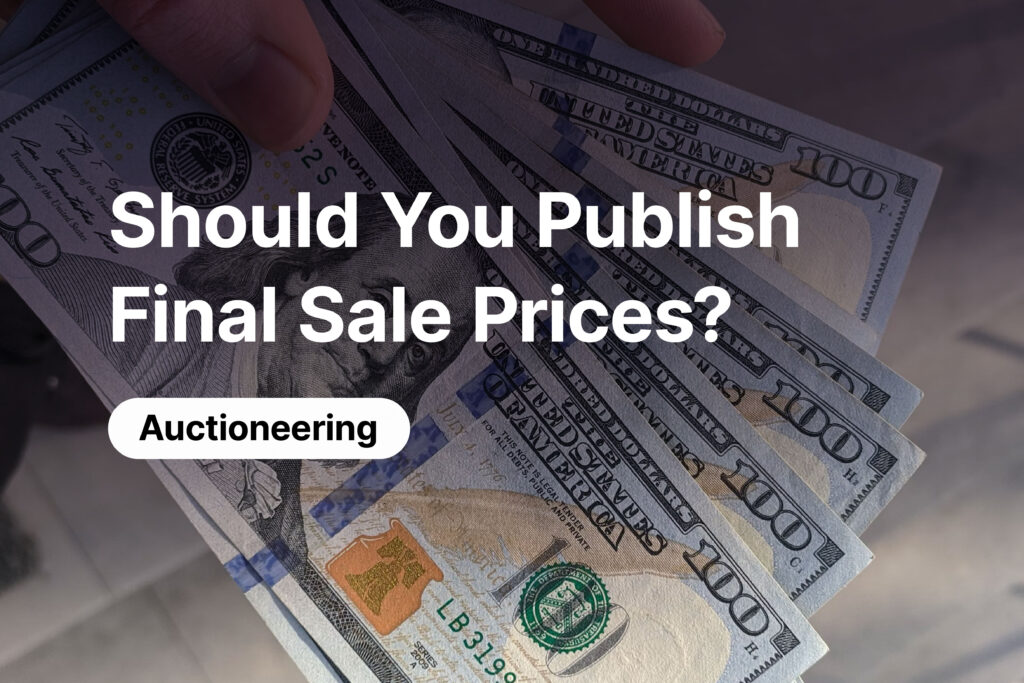1. Transparency
- Major houses already do it. Christie’s keeps a rolling archive of every sale with “View Results” links and hammer prices, searchable by date, artist, or category.
- Digital buyers expect it. When buyers see real results, they feel more confident, stay engaged longer, and often bid more aggressively.
- Marketplace platforms are nudging you. Online marketplaces prominently display realized prices—when auctioneers opt in—making transparency the expected standard.
2. Business Upsides That Move the Needle
| Benefit | Why It Matters |
|---|---|
| More bidder trust | Published results verify that the reserve was met legitimately and that no “shill” bids were inserted. |
| SEO boost | Static “results” pages capture long-tail queries (“[artist] auction price 2024”) and earn backlinks from reporters and valuation services. |
| Valuation database | Your own past prices become comps for appraisals, consignor negotiations, and future catalog estimates—reducing time spent in third-party tools. |
3. Regulations
- U.S. tax reporting
With 1099-K thresholds dropping to $600 by 2026, more sellers will request year-end gross proceeds reports. A clean results archive streamlines that process. - EU/UK DAC7 compliance
Platforms must report seller revenues to tax authorities; verified hammer prices simplify data submission and audit trails. - Global privacy considerations
Hammer prices aren’t classified as personal data, so you can publish values while stripping or anonymizing buyer and consignor identities.
Key takeaway: You can satisfy both transparency and privacy by sharing prices without disclosing names.
4. When Publishing Can Backfire
- Confidentiality demands
Some consignors—especially estates or corporate liquidators—require strict anonymity for competitive or reputational reasons. - Negative signaling
Low-price outliers in a niche category may reset market expectations, deterring future consignments in that specialty. Publishing a single low-price outlier in a niche (e.g., rare minerals) can reset market expectations for years. - Selective withholding
High-end vendors sometimes choose not to publish results after disappointing auctions to protect their market positioning.
5. A Decision Framework
| Question | Publish | Hold Back / Anonymise |
|---|---|---|
| Client Type | Institutions, estates, government surplus | Ultra-high-net-worth private collections |
| Category Liquidity | Commodities, frequently traded fine art | One-off iconic objects |
| Marketing Goal | SEO growth, price-discovery leadership | White-glove concierge positioning |
| Jurisdiction | Clear tax-reporting mandate (US, EU) | Countries where publishing could breach secrecy (e.g., Switzerland art-storage sales) |
Conclusion
Publishing realised prices is no longer just a courtesy—it is becoming part of the compliance stack and a measurable growth lever. Yes, confidentiality and reputational concerns are real, but they can usually be mitigated with consent clauses and smart data-handling. If your auction house wants stronger bidder engagement, richer SEO, and smoother tax reporting, a transparent results archive is the lowest-hanging fruit of 2025.
